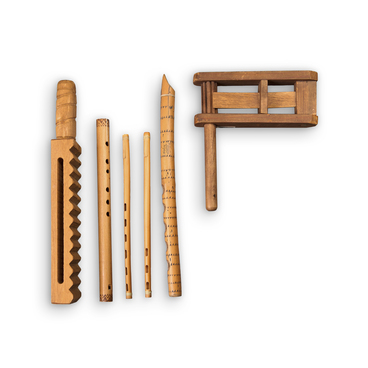The permanent exhibition of the Belgorod State Historical and Local History Museum features a wall-mounted newspaper holder made by the nuns of the Nativity of the Theotokos Monastery in the 1880s. It was created in the form of an envelope, convenient for storing folded newspapers. To save space, these newspaper holders were hung on the wall using a special ring attached to the top of the “pouch.”
Newspaper holders were made from various materials: wood, metal, or fabric, with fabric items being the most popular at the turn of the 19th and 20th centuries.
Periodical press appeared in Russia at the beginning of the 18th century. The first newspaper, Vedomosti, was published irregularly and mostly promoted Peter the Great’s reforms rather than transmitted news. Gradually, the number of publications increased, and newspapers took a significant place in the social and cultural life of Russia.
Periodicals gained great popularity in the second half of the 19th century; at the same time they began to spread in the provinces. New types of publications appeared, including popular science, family reading, scientific and philosophical, and art magazines.
In Belgorod, from the late 1860s, for over 20 years, Kursk Diocesan News was printed at M.M. Gordon’s printing house. In 1910, the Belgorod Leaflet began to be published on four pages. In 1917, the Belgorodskaya Pravda appeared.
As more newspapers and magazines were published, the number of newspaper holders also increased. For example, in Belgorod they were made at the Nativity of the Theotokos Monastery, which was located in the very center of the city, where the Belgorod State Academic Drama Theater named after Mikhail Semenovich Shchepkin is located today.
The monastery was founded in 1622 by decree of Tsar Mikhail Fedorovich. At first, it was difficult for the nuns to get by, but in 1717, when the Logovskaya Chapel with the miraculous image of the Korsun Mother of God was assigned to the monastery (now it is the Monastery Forest), life began to improve. In their free time, the nuns decorated icons, prepared artificial flowers, decorated Easter eggs, and made embroidery.
After the October Revolution, the monastery was
closed, and in the 1950s the monastery buildings were demolished. In 1962, the
building of the regional drama theater named after M.S. Shchepkin was built in
their place.


